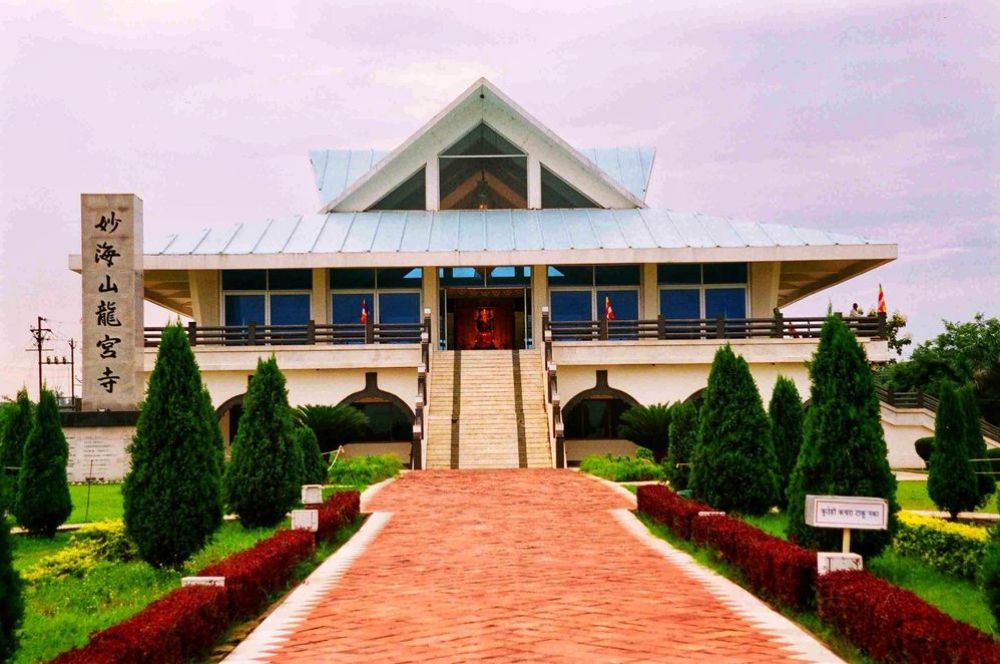

The Dragon Palace Buddhist Temple, also known as the Lotus Temple of Nagpur, is a magnificent Buddhist temple and meditation center located in Kamptee, Nagpur district in Maharashtra, India. Established by the visionary Mother Noriko Ogawa Society of Japan, the temple was inaugurated in the year 1999. It serves as a symbol of Indo-Japan friendship and cultural exchanges. Since its inception, the temple has become an epitome of tranquility and reflects the unique blend of Indian and Japanese architectural styles.
The area of Nagpur has been a significant center for Buddhism for centuries, with numerous stupas and viharas indicating the historical presence of this religion. The Dragon Palace Temple, with its serene environment and stunning architecture, was built to revitalize the deep-rooted Buddhist traditions in the region.
The initiative was also fueled by the need to create a global platform for the spread of Buddhism. Over the years, this sacred site has attracted thousands of devotees from across the world, fostering tourism and enhancing the cultural significance of Nagpur. The temple's foundation also aimed to promote peace and harmony through Buddhist teachings.
The architecture of the Dragon Palace Buddhist Temple is a significant draw for visitors. It features a traditional Japanese design with a pristine white marble structure that has become a hallmark of peace and purity. The grandeur of the temple is accentuated by the surrounding lush green landscape, which stands as a testament to the Japanese aesthetic of natural beauty and simplicity.
With the turn of the millennium, tourism trends have seen a shift towards experiential and spiritual travel. The Dragon Palace Buddhist Temple fits seamlessly into this trend, offering a place for both introspection and exploration. The meditation center, with its enormous prayer hall housing the impressive idol of Buddha, provides a peaceful retreat for those seeking solace away from the hustle and bustle of city life.
Visitors not only engage in spiritual practices but are also drawn to the intricate craftsmanship, the serene lotus pond, and the sprawling garden landscapes that offer ample opportunities for photography and leisurely walks.
The influx of national and international tourists has had a positive impact on the local economy, boosting employment opportunities and encouraging the development of infrastructure. Local artisans, guides, and the hospitality industry have experienced a surge of growth due to the temple's popularity.
Cultural events and festivals are now regularly held at the Dragon Palace Temple, adding to its allure as a tourist destination. These events also facilitate cultural exchanges and contribute to the promotion of local art and traditions.
The Dragon Palace Buddhist Temple is accessible throughout the year. However, the best time to visit is between October to March when the weather in Nagpur is pleasant and conducive to outdoor activities. The temple is well connected by road, and the nearest railway station is in Kamptee, while the Dr. Babasaheb Ambedkar International Airport in Nagpur is the closest airport.
Looking forward, sustainable tourism is the buzzword, and the Dragon Palace Temple is committed to maintaining harmony between visitor needs and the preservation of its serene environment. Plans to continually improve visitor facilities while ensuring that the natural and spiritual ambience of the temple is preserved are in place, indicating a promising future for tourism in this sacred place.
In conclusion, the Dragon Palace Buddhist Temple remains one of the most cherished spiritual sites in Nagpur, perfectly combining historical lineage with modern-day tourism trends and offering a unique experience to its visitors.